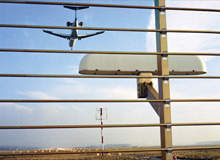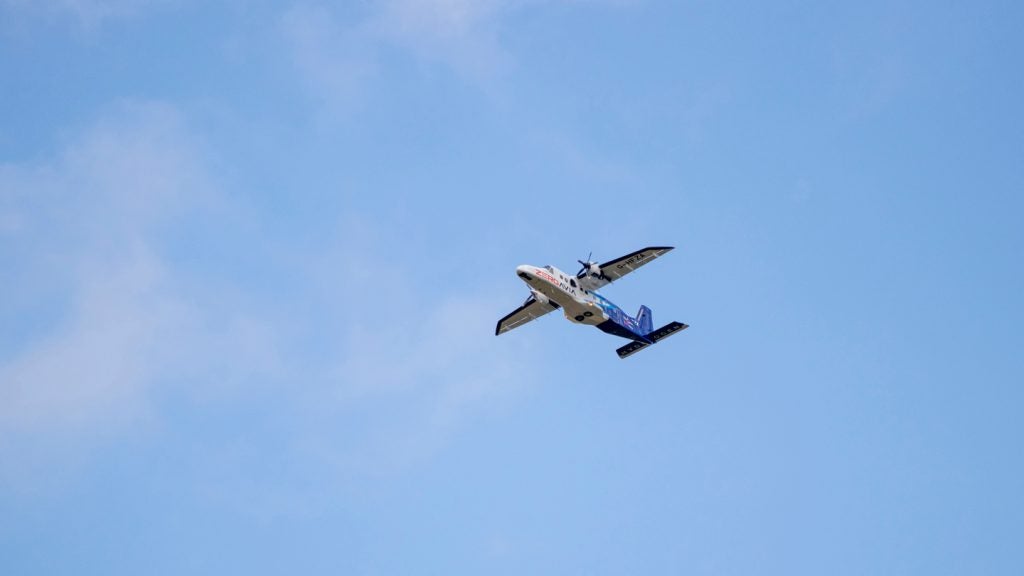
Air disasters are now so rare in the West there are no longer any ‘major causes’ of fatal airliner accidents. Flying has become so safe that it is a challenge to meaningfully express this level of security.
Officially, the fatal accident rate in the USA is 0.022 per 100,000 departures, but this is mainly made up of cargo accidents, or cases where a ground employee is hit by an aircraft on the ramp or drives a tug into an aircraft. The chance of being killed on a passenger flight is just 0.007 per 100,000 departures, and if only passenger jets are considered, the rate falls to 0.004. This means that an accident with fatalities occurs about every 15 to 16 million flights.
You would have to fly every day for 43,000 years to get to an even chance of being killed in an airline accident. You are about 40 times safer in an aircraft than on the safest highway system in the USA (the Interstate). This impressive safety record is rarely appreciated because when a rare accident happens it becomes big news.
THE SAFEST WAY TO GO
Such a high level of safety has been achieved by continual improvements in technology that either reduce the opportunity for human error or enable pilots to recover after a serious error.
When they emerged in the 1940s, pressurised aircraft made it possible for aeroplanes to fly above the weather en route, significantly reducing controlled flight into terrain (CFIT) accidents and loss of control in flight. The introduction of VHF omnidirectional range (VOR) and the first instrument landing systems (ILS) in the 1940s and 1950s also brought down the number of CFIT and approach-and-landing accidents.
How well do you really know your competitors?
Access the most comprehensive Company Profiles on the market, powered by GlobalData. Save hours of research. Gain competitive edge.

Thank you!
Your download email will arrive shortly
Not ready to buy yet? Download a free sample
We are confident about the unique quality of our Company Profiles. However, we want you to make the most beneficial decision for your business, so we offer a free sample that you can download by submitting the below form
By GlobalDataThe introduction of radar in the 1950s resulted in an unprecedented level of safety and the addition of VOR/DME receivers in the 1960s further reduced accidents.
The invention of the jet engine is possibly the most valuable long-term improvement in safety, initially making engines about 20 times more reliable.
Within its first few years in use, this was increased to 50 times, and now jets are being developed that are 100 times more reliable than reciprocating engine technology. Before the jet, there were an average of 3.5 fatal aeroplane accidents per year in the USA due to engine failure. In contrast, Part 121 jet operators have had just two fatal accidents in the past 20 years (Sioux City and Pensacola).
More recently, traffic alert/collision avoidance systems (TCAS) and terrain alert warning systems (TAWS) have almost eliminated fatal midair collisions, once common causes of accidents. With TCAS, no Part 121 US carrier has had a midair collision since 1978.
The experience with ground proximity warning systems (GPWS) and CFIT is more dramatic. Between 1946 and 1955, large passenger aircraft averaged 3.5 fatal CFIT accidents a year in the USA – a fatal CFIT accident every 15 weeks. That figure was reduced to two fatal passenger airline accidents until 1974, since when there have been no fatal CFIT accidents in US airspace.
In March 2005, TAWS was made obligatory for all turbine-powered aeroplanes configured for six or more passenger seats, whether they are used in air carrier service or in Part 91 operations. This has increased both the level of sophistication and the range of aircraft equipped with TAWS.
Technology also enhances human performance. With the six-axis simulator, using real data from real flights, crew resource management training has been enhanced with real-world scenarios. Pilots gain ‘real’ experience flying through and out of wind shear and learn in a risk-free environment how to handle an engine failure or failed flight controls.
ROOM FOR IMPROVEMENT
With safety levels so high, it seems that there is little room for improvement. This is not necessarily the case. The industry is now moving to the next level in commercial aviation safety, which involves shifting from a descriptive to a prescriptive approach.
Until now, achieving a better safety record has been about applying forensic and diagnostic tools to common causes. Now, with no common causes, the industry needs to shift to a more prognostic or predictive approach. For this to work effectively more data are required, which must be analysed to discern trends and identify precursors.
Achieving a stronger future for aviation safety is all about sharing safety data. Operators, manufacturers, repair stations, suppliers and others across the aviation community hold a huge, untapped resource of safety information. The FAA has access to about 5% of this valuable information.
In an effort to remedy this situation, the FAA has launched a demonstration project with the airlines on gathering and sharing data from aviation safety action (ASAP) and flight operational quality assurance (FOQA) programmes. ASAP encourages airline employees to voluntarily report critical safety information. Today, 51 carriers have 106 programmes covering pilots, mechanics, flight attendants and dispatchers.
FOQA collects and analyses digital flight data generated during normal operations. This information is unique because it provides objective information not available through other methods. Today, 15 US airlines have FAA-approved FOQA programmes.
To reach the next level of safety, and to achieve this while the number of flights is rapidly increasing, the industry must find a way to share safety information more efficiently.
SHARING INFORMATION DATA
The information gathered from ASAP and FOQA has already led to changes in training and enhanced operational and maintenance procedures. One successful result of this initiative has been the establishment of the commercial aviation safety team (CAST), which includes representatives from government, industry and employee groups.
It is co-chaired by Hank Krakowski, vice president of corporate safety at United Airlines, and Peggy Gilligan, FAA deputy associate administrator for aviation safety. Its mission is to develop an integrated data-driven strategy to reduce the US commercial aviation fatality risk.
CAST’s success is driven by its disciplined and focused approach to analysing accidents and incidents, identifying precursors and developing targeted implementation strategies. After the strategies are implemented, CAST monitors and measures their effectiveness and identifies future areas of study. Thanks to CAST, the industry is on target to reduce the fatality risk in commercial air travel by 73% by 2007.
At the same time, the FAA has been working with NASA to collate the many aviation safety data sources. By combining the various safety databases it should be easier to reveal the rare and infrequent emerging threats and hazards. The objective is to push the science of advanced data analysis to enable ‘vulnerability discovery’, revealing precursors to accidents and permitting proactive steps to mitigate risks before loss of life.
Another important initiative is the Aviation Safety Analytical Unit, which will develop the analytical work done by CAST and work with NASA on aviation safety information analysis and sharing systems (ASIAS). It will also support the FAA joint planning and development office (JPDO) safety integrated product team (IPT), which is committed to implementing a safety management system within JPDO and its member governmental agencies and customers. A safety management system based on aviation safety information analysis and sharing will set the standards for safety culture and safety risk management.
The analytical unit will also have the important responsibility of looking ahead to the future. With growing demand, introduction of new aircraft and globalisation, it is essential to see what is coming. At present, more than 30,000 flights take off daily in the USA; this will soon surpass 40,000.
In a system of this size and complexity, fatal accidents will not go away, but if nothing is done to improve safety, they may well increase as the number of flights rises. In the future, air safety investigators will need to have sharp, analytical minds as well as good interpersonal skills, psychological and physical preparedness, and a desire to keep learning.
With the right people supplying and analysing the data, the rate of fatal accidents can be reduced, perhaps even lower than 0.004.







